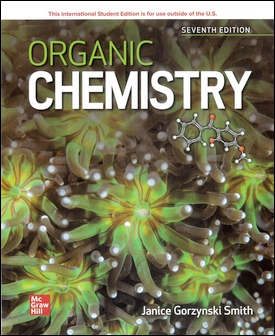書籍分類

Organic Chemistry 7/e
作者:Janice Gorzynski Smith
原價:NT$ 1,700
內容介紹 本書特色 目錄
- Description
Organic Chemistry, Seventh Edition, continues the successful student-oriented approach used in prior editions. This text uses less prose and more diagrams and bulleted summaries for today’s students, who rely more heavily on visual imagery to learn than ever before. Each topic is broken down into small chunks of information that are more manageable and easily learned.
Organic chemistry is a dynamic subject that is continually refined as new facts are determined. Each year, novel compounds are discovered, and new drugs are marketed, and these compounds replace older examples to illustrate particular concepts. In this edition, for example, every effort has been made to include content on COVID-19.
The text is strengthened by its offering in ALEKS, now featuring Custom Question Authoring, Video Assignments, Virtual Labs, and more!
分類位置:
無


